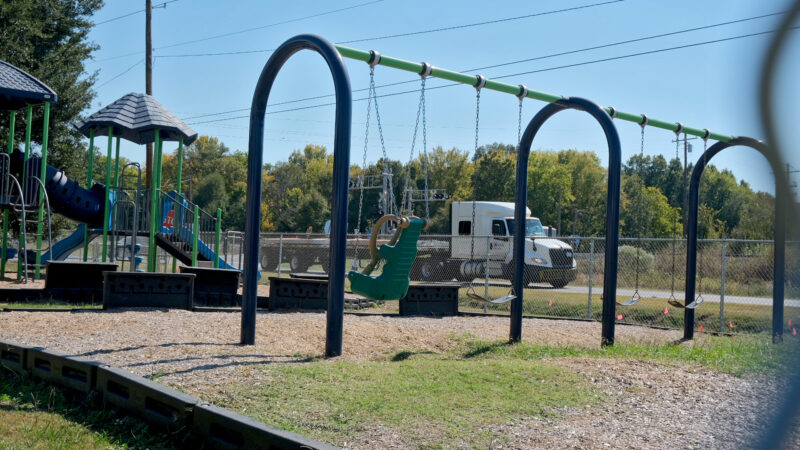University of Alabama History Professor Speaks About Cannonballs Found On Campus
It’s not every day you stumble upon a 150-year-old relic. But that’s what happened last week when a sidewalk repair crew at the University of Alabama uncovered 10 Civil War era cannonballs buried in the ground. The university called in a bomb squad as a precaution but the cannonballs were removed without incident. WBHM’s Stephanie Beckett spoke with University of Alabama history professor Harold Selesky about why they probably came from that time period.
Why Civil War?
Looking at a cannonball, there’s no definitive way to tell exactly what time period it came from.
However, Selesky says it’s a safe bet that the cache of cannonballs is a leftover surprise from the Civil War.
“It is more likely than not that they are from that time period,” he says, “given the level of military activity is highest on campus during those years.”
The Danger
Cannonballs were made in two ways: solid and hollow.
Selesky says solid cannonballs aren’t dangerous, but because hollow ones were usually filled with gunpowder, they can be.
“The idea is to explode the shell over the enemy,” he says, “causing damage.”
However, he says after decades of being buried underground, water and erosion would probably render the gunpowder ineffective.
How They Got There
Selesky says Confederate soldiers probably stored the cache of cannonballs underground until needed — but then forgot about them.
“As the university grew up basically around it,” he says, “nobody knew it was there; ultimately found by serendipity [when] the sidewalk had to be replaced.”
What This Tells Us
Selesky says information about the cache’s origins will probably come to light after the cannonballs are studied and archives are looked at to try and place them in a more specific time period.
“There’s no definitive way to understand what these were,” he says, “but there are better guesses.”
However, he also says that it’s unlikely historians will ever actually be able to place the cannonballs at an exact date.
“But in general,” he says, “I think you can figure out why they’re there, what happened, and something about their history.”
Photo by Internet Archive Book Images
Judge orders new Alabama Senate map after ruling found racial gerrymandering
U.S. District Judge Anna Manasco, appointed by President Donald Trump during his first term, issued the ruling Monday putting a new court-selected map in place for the 2026 and 2030 elections.
Construction on Meta’s largest data center brings 600% crash spike, chaos to rural Louisiana
An investigation from the Gulf States Newsroom found that trucks contracted to work at the Meta facility are causing delays and dangerous roads in Holly Ridge.
Bessemer City Council approves rezoning for a massive data center, dividing a community
After the Bessemer City Council voted 5-2 to rezone nearly 700 acres of agricultural land for the “hyperscale” server farm, a dissenting council member said city officials who signed non-disclosure agreements weren’t being transparent with citizens.
Alabama Public Television meeting draws protesters in Birmingham over discussion of disaffiliating from PBS
Some members of the Alabama Educational Television Commission, which oversees APT, said disaffiliation is needed because the network has to cut costs after the Trump administration eliminated all funding for public media this summer.
Gov. Kay Ivey urges delay on PBS decision by public TV board
The Republican governor sent a letter to the Alabama Educational Television Commission ahead of a Nov. 18 meeting in which commissioners were expected to discuss disaffiliation.
A proposed Bessemer data center faces new hurdles: a ‘road to nowhere’ and the Birmingham darter
With the City Council in Bessemer scheduled to vote Tuesday on a “hyperscale” data center, challenges from an environmental group and the Alabama Department of Transportation present potential obstacles for the wildly unpopular project.








